Top News
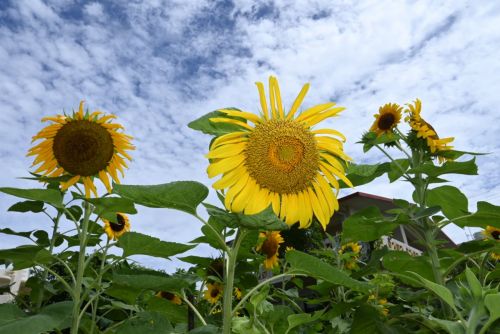
June 12, 2020 Ryukyu Shimpo
On June 12, the Okinawa Meteorological Observatory announced that the rainy season in Okinawa appears to be over. This is 11 days earlier than the end of rainy season in an average year (June 23) and 28 days earlier compared to last year, which was the latest end (July 10) since these statistics were first recorded in 1951.
Rainy season started around May 11 this year and particularly heavy rain was recorded. Rainfall in May in Okinawa was 193% compared to a normal year’s average regional rainfall. As of June 10, the 11 dams on the main island of Okinawa were at 94.6% of their water storage capacity, which is 14.9 points higher than this time in a normal year.
For the next week, Okinawa will be mostly sunny due to high atmospheric pressure over the region. From June 12 to 20 is expected to be especially hot. The Okinawa Meteorological Observatory advises that “There will be elevated risk of heat stroke. Take appropriate measures such as staying out of the heat and drinking plenty of water.”
Many people are wearing masks to prevent the spread of novel coronavirus. However, the Ministry of Health, Labour, and Welfare recommends reducing stress on the body by removing masks when outdoors in a space where social distancing is possible.
(English translation by T&CT and Ellen Huntley)
go to japanese
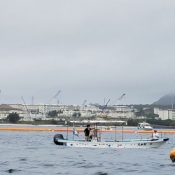
June 12, 2020 Ryukyu Shimpo online edition
On June 12 the Okinawa Defense Bureau (ODB) resumed construction work on the Futenma Replacement Facility (FRF) in Henoko, Nago City, which is intended to be the relocation site for Futenma Air Station (Ginowan City). At about 8:20 a.m. that day, two boats for unloading soil came to shore in Henoko.
Construction on the FRF was halted on April 17 this year when one laborer from a vendor working on construction was found to be infected with the novel coronavirus. There was an Okinawa Prefectural Assembly member election on June 7, just five days prior to the ODB resuming construction, and a majority of the candidates elected oppose the FRF. Additionally, the Okinawa Prefectural Government requested that FRF construction not be resumed.
Okinawa Governor Denny Tamaki exercised restraint on June 11 when he stated that it would be extremely regrettable for construction to resume.
According to persons involved, on June 11 the ODB rescinded its two-squad system for defending against the spread of the novel coronavirus, and prepared to resume construction.
Construction may have returned to normal on June 12, but the mood is becoming ever tenser at the sites where citizens show up to protest against FRF construction.
(English translation by T&CT and Erin Jones)
go to japanese
June 8, 2020 Ryukyu Shimpo
Following the election for the Okinawa Prefectural Assembly (48 members) at the expiry of assembly members’ terms, members of parties supporting Governor Denny Tamaki hold 25 seats in the assembly. This is two fewer than after the previous election under the Onaga administration, but the governor-supporting party members still hold a majority.
Opponents of the new base construction in Henoko, Nago as part of the relocation of U.S. Marine Corps Air Station Futenma continue to hold the majority of seats in the Okinawa Prefectural Assembly after the recent election. This means that that a majority of Okinawans have once again expressed their opposition to the base.
The national government should take these results to heart and abandon its plan to build the new base in Henoko. We cannot allow the popular will to be ignored any longer.
Opponents of the new base construction have been successively elected, from Governor Tamaki in the September 2018 gubernatorial election to Diet members Tomohiro Yara in the lower house election in April 2019 and Tetsumi Takara in the upper house election in July 2019. In the referendum on the base construction in February of last year, more than 70% of voters opposed the land reclamation.
In the recent prefectural assembly election, the Liberal Democratic Party, which is the opposition party in the prefectural assembly, took a clear stance of “acceptance” of the new base opposed by the governor-supporting parties, on the grounds that it is the only feasible plan to quickly eliminate the dangers posed by MCAS Futenma. The parties’ opposing views on the issue were clear-cut, and the issue was a key point of contention in the election.
Other issues at stake in the election were measures on coronavirus infection, medical care and welfare policies, economic revitalization policies, and the like. The election served as a mid-term assessment of the Tamaki administration, which was established two years ago. The results can be said to show that the Tamaki administration has garnered a certain degree of trust from the people.
We hope to see Governor Tamaki approach negotiations with the national government bolstered by this consistently-demonstrated public opposition to the construction of the new base in Henoko.
The executive and legislative branches of government are referred to as two wheels of a vehicle. In this dual-representative system, assembly members are representatives of people living in the prefecture directly elected, alongside the governor, by the residents. For members of the governor-supporting parties to uncritically accept all of the governor’s policy proposals, and for members of the opposition parties to oppose all of his policies without careful consideration, prevents constructive discussion.
The governor too must not neglect to endeavor to increase understanding of prefectural government administration by remaining in regular, close communication with assembly members of all parties.
We hope to see the 48 members elected by the voters strengthen their role of providing a check on the prefectural administrative arm while also endeavoring to make the prefectural assembly even more open and transparent to the people of the prefecture.
There are many issues to be addressed other than the base issue, such as helping the tourism industry recover from the hit it has taken as a result of the coronavirus; addressing the end of the Okinawa Advancement Plan, which will draw to a close at the end of fiscal 2021; improving Okinawan income levels, which are among the lowest nationwide; and addressing child poverty.
As set forth in the Okinawa Prefectural Assembly Basic Ordinance, the independence and autonomy of the prefectural assembly must be increased, and its functions must be exerted to their maximum. “Accurately ascertaining the will of the people and reflecting it in the prefectural administration through assembly activity” is the crucial mission assigned to the prefectural assembly. We want each assembly member to take this mission to heart and devote themselves daily to seeing it through.
In the recent election, assembly members were elected without any voting taking place in four electoral districts, the largest number of electoral districts for this to happen historically. In part because of the coronavirus, the voting rate was a historical low of 46.96%. This is a terrible shame. We must find a way to make voters aware of policy issues and promote voting.
(English translation by T&CT and Sandi Aritza)
go to japanese
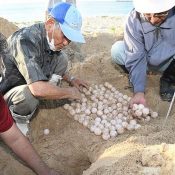
June 6, 2020 Ryukyu Shimpo
By Kengo Kyan
Onna Village, Okinawa—On June 3, for the first time in two years, sea turtles were observed nesting at a beach in Nakadomari. Around 124 pink eggs the size of ping-pong balls were found. Terunobu Yamauchi, 82, who has been a conservationist for over 25 years, explained: “Last year was the first time the turtles did not lay eggs, which had me worried.” He wiped beads of sweat from his forehead and said, “I’m ecstatic.”
During the May-to-September nesting season, Yamauchi wakes up at 5 a.m. every morning to patrol 1 kilometer of the shoreline in Onna Village. He also removes vines and picks up washed-up marine litter to aid the sea turtles nest.
Last year, for the first time, there were no signs of sea turtles having nested in the area. He explains he was anxious and wondered to himself, “Is it because of environmental pollution? Or climate change? Will they come back to nest?”
Early morning on June 3, Yamauchi found sea turtle trails on the beach. In the evening, he unearthed the eggs with fellow conservationists Hide Kohagura, 83, and Yoshikazu Yogi, 52. They have posted warning signs and will be keeping a close watch until the eggs hatch in approximately 60 days.
Yogi said, “I’m glad. There weren’t very many eggs two years ago.” Meanwhile, Kohagura said, “It’s great connecting with living beings.” Yamauchi added, “I grew up here and I’m fond of this place. I don’t know how long I can continue [the conservation work] but I would like to keep going.”
(English translation by T&CT and Monica Shingaki)
go to japanese
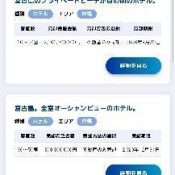
June 9, 2020 Ryukyu Shimpo
By Yuki Nakamura
The tourism industry took a big hit from the effects of COVID-19, and there are increasing stories of those who are looking to sell their hotels despite the drop in price, as well as foreign firms and investors who are looking to purchase lodging facilities. Those involved in the industry in Okinawa have felt an increasing danger, commenting, “There is a good chance that a large portion of Okinawa’s real estate and tourism revenue ends up in the hands of parties from outside the prefecture or the country.”
Star Resort (Naha), a company that manages hotels, launched a website on June 5 for those looking to engage in mergers and acquisitions in the hospitality industry.
The postings on the website include facilities such as: a hotel near a private beach on Miyakojima (with 10-30 guest rooms) listed for 2 billion yen; and a hotel on Okinawa’s main island that includes a pool, comes with all the electrical appliances and furniture, and an ocean view (under 10 guest rooms) listed for 484 million yen. A representative from Star Resort said, “There are those who want to sell their hotel, and get cash in hand quickly, and we expect that the number of listing will increase.”
Similarly, the number of inquiries about purchasing a hotel have been increasing since May, with over 60 companies making an inquiry in the past month. According to Star Resort, the buyers are mostly major real estate developers and individual investors from outside of the prefecture. With the decline in tourism, the operating ratio of Okinawan lodging facilities has dropped greatly, however while the current foreign travel bans are expected to continue for some time, there are many who are forecasting that Okinawa will be a prime destination for domestic travel.
According to Takashi Fujimoto, CEO of RYUZ Okinawa, a tourism consulting company in Okinawa, said that the number of private investors from outside of Okinawa or outside of Japan were calling to discuss purchasing a “private residence that can be used as vacation rentals.” Locations on Okinawa’s main island near the beaches in both the north and south such as in Nakijin, Motobu, and Nanjo are popular. For these vacation rental properties, reservations can be made online and guests can check in with a digital key, which means that it can be done without having to interact with another person, which has become a highly desirable way of travelling.
The deficits being caused by the decrease in tourism have now stretched for a lengthy period, and with the decrease in cash flow, there are many companies that are unavoidably looking into selling their lodging facilities. Investors are predicting that tourism will rebound in Okinawa in the long-term, and believe that the Okinawan real estate being put up for sale is a very worthwhile investment. Fujimoto noted his concern of this situation, saying, “These strong assets are being taken up by parties outside of Okinawa, and it is possible that these profit never make their way back to Okinawa.”
One man who runs a real estate agency in Okinawa commented anonymously that he has been approached about a deal for the city hotel in Naha. He has spoken with a Taiwanese investor who is interested in buying the Okinawan hotel. He said, “Since the sale involves the movement of hundreds of millions of yen, the contract period will take about six months. It is possible that the number of hotels up for sale will have increased after that six-month period.”
(English translation by T&CT and Sam Grieb)
go to japanese
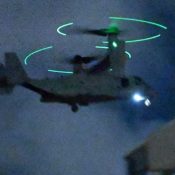
June 4, 2020 Ryukyu Shimpo
On June 2 several vertical take-off and landing transport MV-22 Osprey landed on Marine Corps Air Station Futenma (MCAS Futenma) in Ginowan City after 10:00 p.m., which falls outside the time period allowed under aircraft noise abatement measures (the noise prevention agreement).
According to noise measurements taken by the Okinawa prefectural government and Ginowan City’s government, at 10:31 p.m. that night at Nodake 1 Public Hall, which is north of MCAS Futenma, noise reached 87.7 decibels. Ginowan City residents made eight complaints to the city government, leaving comments such as “It was so loud that I couldn’t sleep”.
It is said that 80 decibels is equivalent to the interior of a pachinko parlor. On the night of June 2, after 10:30 p.m. three Osprey landed at Futenma Air Station, and just before 11:00 two more Osprey landed successively. At 10:52 p.m. at Futenma Junior High School, which is north of the air station, noise was recorded at 85.7 decibels.
Ginowan City’s base damage phone number 110 received comments such as “I wish they wouldn’t fly so late”, and “I want to request that flights after 10:00 p.m. be stopped”.
(English translation by T&CT and Erin Jones)
go to japanese
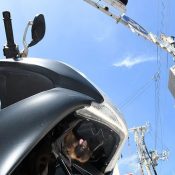
June 4, 2020 Ryukyu Shimpo
By Ryota Shimabukuro
A baby Orii’s flying-fox was found stuck inside the front wheel cover of a parked motorcycle in Izumizaki, Naha City, Okinawa, around 10 a.m. on June 3.
The bat pup was heard squeaking for its mother which was perched on a nearby traffic light, searching and also calling for her baby.
Around 11:30 a.m., a Prefectural Nature Conservation Department staff rescued the pup and moved it to a nearby tree. The baby bat was able to climb the tree on its own, and rejoined its mother.
A department staff explained the mother bat was most likely carrying her pup on its front or back-side, when the pup detached and fell for whatever reason. The area has high human-traffic, and the mother bat was unable to get to her pup.
Typically, the prefecture does not intervene in situations like these. However, in this case, they worried the motorcycle owner could get injured while attempting to remove the bat, and out of concern for the pup’s health, a department veterinarian came to the rescue.
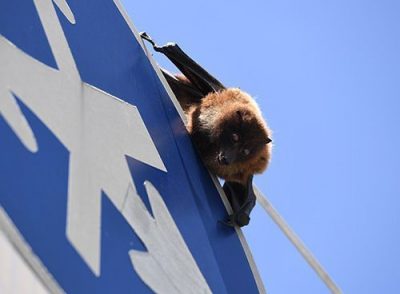
The mother bat worriedly watches over her baby from a nearby traffic sign. Photographed by Yasuhide Matayoshi in Izumizaki, Naha City, on June 3.
(English translation by T&CT and Monica Shingaki)
Go to Japanese
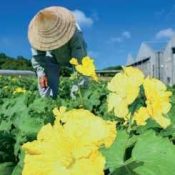
June 5, 2020 Ryukyu Shimpo
June 5 was boshu (Grain in Ear), one of the 24 points on the traditional East Asian solar calendar. It marks the time of the year to sow grains such as rice and wheat. On June 4, a high-pressure system and sunny weather not often seen in the rainy season came to Okinawa.
Of the 25 locations in Okinawa where the temperature is officially measured, a record setting 23 of them broke 30 degrees Celsius, including the Hateruma neighborhood of Taketomi, which reached a high of 32.7 degrees. The Ministry of the Environment’s heat index, which indicates the danger of heatstroke based on factors such as temperature, humidity, and sunlight was raised to a “dangerous” level for Nago, Miyakojima, and Ishigaki. The Okinawa Meteorological Observatory (OMO) predicted that the high temperatures would continue, and asked people to take precautions for their health.
In the fields of Kamizato in Haebaru, the yellow flowers of the sponge gourds are proudly blooming. Ryusaburo Kanzato, a farmer wearing a kubagasa, said smiling, “It’s very hot. The kubagasa is best for keeping out the sun.” Since there was a lot of rain and low sunshine in May, the harvest was delayed.
For the next week, due to an oncoming weather front there will be many cloudy days, and even some days with rain. The temperatures are expected to remain high, and then a high-pressure system will follow, resulting in many sunny days according to predictions.
(English translation by T&CT and Sam Grieb)
go to japanese
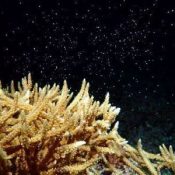
June 4, 2020 Ryukyu Shimpo
Motobu – On the night of May 31, coral spawning was confirmed at the Okinawa Churaumi Aquarium in Motobu. Approximately 70 species of coral are housed in the aquarium’s Coral Sea tank. Corals spawn every year between May and June, right around the time of the spring tides. This year, however, the corals spawned during neap tide. Tides, water temperature, and weather are among the factors believed to impact when corals spawn. Fumihiko Nagata, who is part of the fish team and is in charge of the coral exhibit, says “Spawning during neap tide has happened a few times in the past, but it’s very rare.”
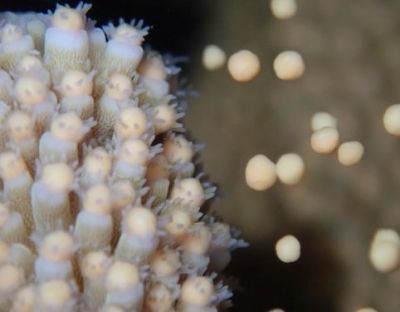
Capsules containing eggs and sperm, called bundles, are released. (Photographs provided by Okinawa Churaumi Aquarium)
Including June 2002, when the aquarium was preparing to open, spawning has taken place at the aquarium for 19 consecutive years. Primarily, it is two species of staghorn coral (Acropora microphthalma and Acropora acuminata), which make up about 60 of the 450 colonies in the exhibit tank and are found in the waters around Okinawa.
During spawning season, aquarium staff observe the coral every night. This year, pink capsules containing sperm and eggs, called “bundles,” were released into the water over the course of one hour, starting at 10:30 p.m. on May 31.
The newly-born coral larvae will be exhibited for between three days and one week. Nagata says, “I hope aquarium guests feel a close connection with the seas of Okinawa.”
(English translation by T&CT and Ellen Huntley)
go to japanese
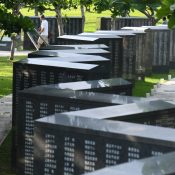
June 2, 2020 Ryukyu Shimpo
On June 1, the Okinawa Prefectural Government’s Peace Support and Gender Equality Division announced that in FY 2020, it will engrave an additional 30 names on the Cornerstone of Peace monument in Mabuni, Itoman, on which are engraved the names of people who lost their lives in the Battle of Okinawa. The Cornerstone of Peace was erected in 1995, and additional names have been engraved annually since 2006; this year’s number of additional names is the smallest yet. Of the 30 people whose names will be additionally engraved, 20 are from Okinawa, nine are from other parts of Japan, and one is from the United States. After the engraving, there will be a total of 241,593 names on the monument.
The Okinawans whose names will be engraved were from Naha, Miyakojima, Nakijin, and other parts of Okinawa. Six of them were no older than five when they died. A representative of the prefectural government explained, regarding the reason the number of new names is smaller than in the past, “Some point out that there are fewer remaining family members of the deceased, but I think it’s most likely that since the monument was built 25 years ago, most of the names of those whose deaths have been confirmed have already been engraved.”
The Cornerstone of Peace was unveiled on June 23, 1995. Names to be engraved thereon are decided in line with a master plan prepared by the prefectural government on the basis of requests from surviving family members. According to a representative of the prefectural government, recently there have been many requests based on testimony and materials from family members, though no official documents exist as evidence. Three names that were accidentally engraved twice will have the duplicates thereof removed. The work has already started, and is anticipated to be completed by the time of the Okinawa Memorial Day ceremony on June 23.
(English translation by T&CT and Sandi Aritza)
go to japanese
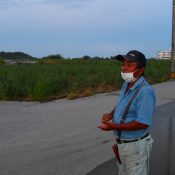
May 27, 2020 Ryukyu Shimpo
By Daitetsu Teruya and Sanenori Kinjo
Nanbu – Chrysanthemum farmers, who were already facing a harsh business environment due to low prices in recent years, have taken a major hit due to the effects of the coronavirus. With the declaration of a state emergency, in order to prevent the “three densities” (closed spaces, crowds, and close contact), there has been a significant decrease in funerals, the major drivers of demand for chrysanthemums in Japan. In Okinawa, they have also been affected by people refraining from participating in the grave sweeping festival. For a small chrysanthemum owner in Nanbu, this meant disposing of up to 15% of his stock of flowers, being unable to sell them. With the decrease in revenue, the farm is now in a life or death struggle.
According to the farmer, the price for chrysanthemums has been on a downward trend since 2010, just before the Tohoku earthquake. Decades ago, the price for one flower was around 60 yen, but has since fallen to just around 30, and is expected to drop to 20 yen. An uncertain future has led to anxiety, he wonders, “How long will this feeling be with me?” Leaning on the used truck he has lovingly relied on for 10 years, he hangs his head.
The profit for the year was 500,000 yen
While the revenue decreased, costs continue to rise. The cost of pesticides and shipping fees to carry the flowers outside of Okinawa rise each year. The mounting costs continue to put pressure on his livelihood.
Furthermore, “The past two, three years we have been hit with typhoons.” Equipment such as the nets that surround the fields were destroyed. Due to repairs the costs never stop. They are somehow getting by on the pension of his mother, who lives with him.
Due to the coronavirus, 15% of the chrysanthemums he grew had to be disposed of. There are other farmers who had to dispose of as much as 40% of their stock. After calculating all the annual costs, he was left with only 500,000 yen on hand. The farmer said strongly, “It’s unthinkable. The past few years has been mind-blowing.”
Unable to ship vegetables for school lunch
An array of flowering plants and vegetables such as chrysanthemums, lisianthus, okra, and green peppers color the fields. For Satoshi Miyahira, 65, who operates a farm in Tamagusuku, Nanjo along with his sons, the coronavirus pandemic has been a huge shock. Shipments of chrysanthemums outside of Okinawa ended around March and April, and with the schools closing, so did the shipments of their vegetables used in school lunches. “I have been running this farm for close to 50 years, but this is the first time I have seen this type of damage,” he said, shrugging his shoulders.
Miyahira was also hit with flooding in his fields after a record-setting rain on May 2 and 6, damaging part of his produce and flowers. With heavy rainstorms increasing, and the timeframe for produce becoming earlier, he is feeling the effects of climate change.
Because his farm is a vital part of supporting people’s food supply, he warns, “If we can’t create an environment for us to farm with stability, the number of people who go into farming will continue to decrease.”
(English translation by T&CT and Sam Grieb)
go to japanese












 Webcam(Kokusai Street)
Webcam(Kokusai Street)


